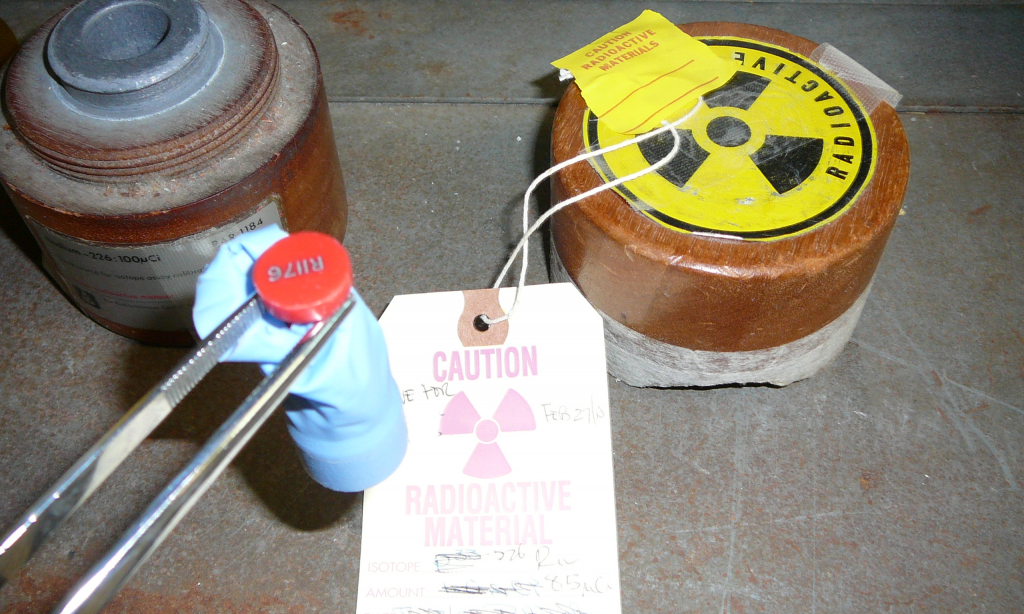Controlling the Hazards
The dose rates from P-32 are not significantly reduced by normal thin plastic or glass containers. Eppendorf reaction tubes containing even small quantities like 50 uCi (1.85 MBq) of P-32 will give a dose rate in excess of 3 Rads/hr at a distance of 0.5 cm and should not be handled directly by hand. Forceps that are 30 cm (12 in) long, or shielding blocks will adequately reduce beta doses during repeated handling. A storage block of lucite with a shielding thickness of 7 mm of plastic should be used to hold tubes during reactions, and to store and transport the tubes or samples safely.
Hand Shields
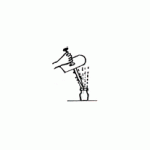
Plexiglass, lucite or plastic lead
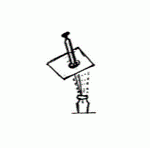
Lead
Reactions and Samples
The dose rates from P-32 are not significantly reduced by normal thin plastic or glass containers. Eppendorf reaction tubes containing even small quantities like 50 uCi (1.85 MBq) of P-32 will give a dose rate in excess of 3 Rads/hr at a distance of 0.5 cm and should not be handled directly by hand. Forceps that are 30 cm (12 in) long, or shielding blocks will adequately reduce beta doses during repeated handling. A storage block of lucite with a shielding thickness of 7 mm of plastic should be used to hold tubes during reactions, and to store and transport the tubes or samples safely.
Handling Tools
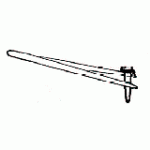
Long Forceps
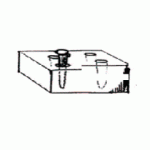
Shielding Block
Simple Precautions Reduce Doses Significantly
Energetic beta emitters like P-32, I-131, or Y-90 can be used safely with simple precautions. Plexiglas, lucite, or plastic can be easily made into shields of various designs. Simple remote handling tools like 30 cm (12 in) forceps or tweezers will keep hands away from significant beta doses. The Health Physics Safety Manual gives more detailed information about beta dose rates and shielding requirements for other beta emitting isotopes.
